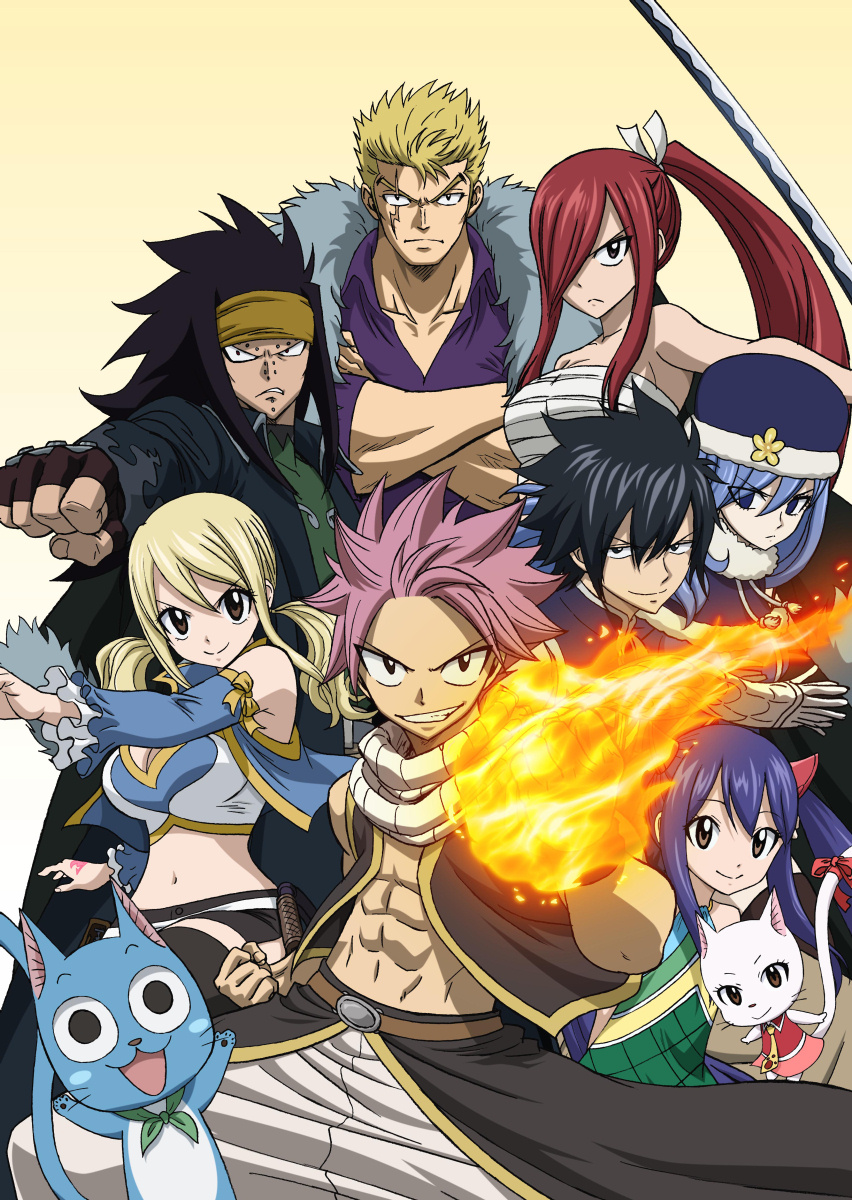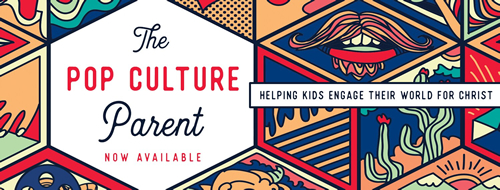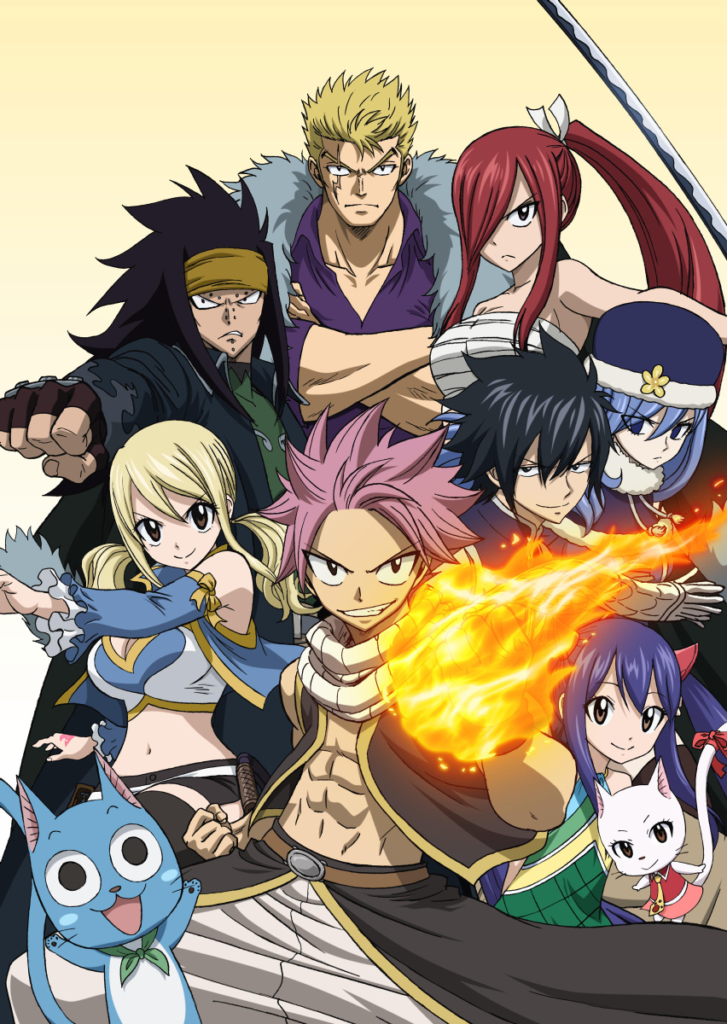An Anime Newbie Joins Fairy Tail: Story and World
Time for my confession: last year the Anime People got to me. I became a fan of “Fairy Tail.”
Yes, I had already been inducted (at first reluctantly) into the Hayao Miyazaki film fandom. Now, thanks to my wife and sister-in-law, I’m more than 600 stories into “One Piece,” 3/4 through the first two seasons of “Inuyasha,” and have completed the miniseries “Erased.”12
But first I had to be drawn into this wacky wizarding world created by Hiro Mashima.

Some 1980s kids have “He-Man.” I have “Superbook.”
I shouldn’t be surprised, because anime fits in my early years, when I loved a series called “Superbook.” Cool Christians who wanted to share their faith in Japan—Pat Robertson’s people, folks—made this series.3 They hired the animation studio behind “Speed Races” and the English dub cast of the “Kimba the White Lion” TV series. “Superbook” and “The Flying House” were integral to my childhood, although when I got older I realized four facts:
- Characters’ mouths did not move normally. Did this mean the animation was Bad?
- This show was actually Japanese, so wasn’t that weird and possibly also Bad?
- Possibly the Japanese origin explained the casual nudity moments (which, during airings on evangelical television, the broadcasters tried frantically to edit or censor).
- Almost certainly this meant “Superbook” and “The Flying House” were actually Bad.4
So I suppose I was somewhat prepared when my wife reluctantly informed me she had become a fan of an anime series called “Fairy Tail.” She kept mentioning complex themes and moments that sneaked in among wild battles, crazy villains, and plain fanservice moments (such as having characters suddenly appear in bikinis/underwear for no reason).
Her descriptions of story and characters intrigued me. So we viewed the first 48 “Fairy Tail” stories on Netflix. Then I was hooked. We switched to Crunchyroll, spent months caught up to the most recent story, and even bought the streaming service to see newer stories sooner. Then the series went on hiatus.
So now, despite our other anime fandoms, we’ve gone back to the beginning to re-view the first 48 stories of “Fairy Tail.” Now I’m finally here to review this first “season. Here we go:

Many of the cast of “Fairy Tail” episodes 1-48, plus two newcomers from the next arc.
The story of Fairy Tail5
Fairy Tail’s first 48 episodes cover 128 chapters of the Mashima’s original manga, with a few “filler” stories. Several story arcs take place here, but are all part of one story arc. It starts when teenage novice wizard (or madoshka) Lucy Heartfilia wants to join Fairy Tail, one of the most popular wizarding guilds. In her fantasy world, magic is commonplace, sold and practiced and organized by wizards who form guilds. Lucy quickly meets Natsu Dragneel, an exuberant teenage boy with dragon powers, and his flying cat sidekick, Happy. After an encounter and battle with a fake wizard who has been using Fairy Tail’s good name for his selfish ends, Natsu jubilantly encourages Lucy to join the real Fairy Tail.
Lucy arrives to meet the colorful cast of the titular guild: not only Natsu and Happy, but Gray Fullbuster, an ice wizard with a habit of stripping (usually within American PG rating limits), and Erza Scarlet, a more mature armored Amazon-like warrior who can magically requip weapons and gear. Dozens of other wizards staff the guild, but these others take stage right and left: they include Cana, a compulsive drinker with playing card magic; Levy, a bookworm who uses magic runes and who has a duo of fanboys; and siblings Elfman and Mirajane, who have body transformation powers and their own story of tragic loss.
Our five main heroes—Lucy, Natsu, Happy, Gray, and Erza—go on several quests:
- First, a famous author’s son hires them to infiltrate a rich collector’s mansion to destroy the novelist’s last and most terrible book, only to discover the novel’s magical secret.
- Second, Lucy, Natsu, and Happy (and later joined by Gray and Erza) attempt a more-dangerous and profitable quest: island residents are being mysteriously turned into demons by moonlight, and naturally they hire wizards to destroy the moon.
- Third, all of Fairy Tail is attacked by a rival guild, Phantom Lord. Its most powerful members include Juvia, a young water woman who confronts and develops a lifelong crush on Gray, and Gajeel, a wizard with metal dragon powers who leads the attack.
- Finally, Fairy Tail member Laxus, rebellious grandson of guildmaster Makarov, hijacks a town festival to pit Fairy Tail wizards against one another, all to take over the guild.
The magical, modern, and moral worlds of Fairy Tail
 When I first began viewing Fairy Tail, these fantasy world tropes were new to me: modern clothing and settings with a few pioneer-medieval flourishes, “Flintstones”-type means of transportation and other technologies, and magic and science fiction devices casually mixed together. (I’ve since learned this sort of world is more common in anime fantasy.) I found most surprising the parody and popular culture elements: Fairy Tail’s land has its own celebrity reporters, t-shirt lines, fashion/girlie magazines, distant bureaucracies, and sportscasts. The guild even sells its own licensed apparel, including backpacks and toys.
When I first began viewing Fairy Tail, these fantasy world tropes were new to me: modern clothing and settings with a few pioneer-medieval flourishes, “Flintstones”-type means of transportation and other technologies, and magic and science fiction devices casually mixed together. (I’ve since learned this sort of world is more common in anime fantasy.) I found most surprising the parody and popular culture elements: Fairy Tail’s land has its own celebrity reporters, t-shirt lines, fashion/girlie magazines, distant bureaucracies, and sportscasts. The guild even sells its own licensed apparel, including backpacks and toys.
This planned hodgepodge reflects in the art style, in which regular towns and other places are both vaguely modern European and ornately medieval. Similarly, the animation seems fairly standard for anime, but (in the first 48 stories) has moments of startling fluidity.
Of course, some things are just plain weird, and this took some getting used to for this anime newbie. A blue cat flies. A wizard performs art magic on his own comically oversized spheroid body. A gangster-looking villain is a literal blockhead. The story pauses to switch into showing bobblehead versions of the characters, who pop up and comment on things. And women often walk about in scanty attire, meaning nothing by it, and you just get used to it after a while.6
What about Fairy Tail’s magical and moral universe?

It’s more meaningful in the actual story, really.
Magic-using people form good magic guilds, or good but sometimes dysfunctional and usually even sillier guilds, or bad guilds, or over-the-moral-event-horizon-evil guilds. This brings many wild battles (sometimes across many episodes) between magically endowed humans. But most of the time, this isn’t action for its own sake. Battles usually have deeper meaning because of who is fighting and why they’re fighting, and this meaning usually plays into the person’s life story, going back to their early years. For example, Lyon, an ice wizard who grew up with Gray, serves as a villain (at first) because he wants to unleash the demon that killed his master, Ur, and thus surpass her in skill. And Erza Scarlet fights to defeat, and if possible to rescue, her childhood friend, Jellal, who is being influenced by an evil spirit.
Naturally, most of the stories are set in the magic side of a world divided between magic-users and normal people, but it seems anyone can learn magic with natural talent and hard work. And that requirement for hard work and “getting stronger,” as a wizard and as a person, is a significant theme in Japan (or at least in shōnen anime-land). This theme, like this world’s natural-law magic itself, powers “Fairy Tail”’s most crucial moral principles:
- Magic guilds or similar groups, despite their flaws and dysfunctions, are good.
- The most powerful kind of magic, and/or the best kind of individual strength, comes from your love for and dependence on your friends/family, that is, your nakama.
- Wizards who apply these truths will grow stronger and will become better people. Wizards who don’t understand this, or reject this, must either be taught to embrace this better way, or else be utterly defeated in anime fantasy battles.
Part 2: the good and true versus the bad and false of Fairy Tail, and how the Gospel responds.
- This was entirely thanks to Audie Thacker’s positive review here on SpecFaith. ↩
- Blast it, someone even jokingly introduced me to the bishōnen or “pretty boy” genre. The show she introduced often spoofs the genre, which helps a little. But that is where I do draw a line. ↩
- Superbook – Animation Series – History, undated and uncredited article at CNN.com. ↩
- Now all of this response seems silly. Among the many internet materials critiquing evangelical children’s culture, I’ve seen only affection for “Superbook” and “The Flying House.” And in fact, these stories are far more fantastical than anything I see today. ↩
- I am writing this review in a different way, following the five “popologetics” story questions proposed by author (and writing partner) Ted Turnau in his book Popologetics. ↩
- From a Christian view of “lust resistance,” I have found my own a fascinating response. In a sense I have become desensitized to these images. But there are two kinds of “desensitization” that lead in different directions. The first is the sinful kind, in which you are desensitized in favor of temptations and actual sinful choices in response to things. The second is a better kind, in which you are more resistant to the temptation afforded by, say, a picture of a scantily clad person. More on this in my concluding article. ↩







































1) Erased is AWESOME and heartbreaking all at the same time.
2) Inuyasha is ultimately pointless, as nobody has much of a character arc and the plot ends up exactly where it telegraphed it would be: happy ending with the Destined Pairs ending up as paired. I would go back in time and recommend myself something else.
3) I recommend Psycho Pass, Food Wars (Shokugeki no Soma) (ridiculous but fun in much the same way Fairy Tail is), Sweetness and Lightning, Natsume’s Book of Friends (Crunchyroll has them loaded weird, the last season is separate from the other three, probably because of import reasons).
4) The proper Japanese for that version of “magician” is “mahoutsukai.” The “tsu” tends to be slurred over in most words, because the Japanese can be lazy about enunciation, too. /pedant
5) I find it pretty easy to ignore Japanese fanservice because most of it so ridiculously over-the-top, cartoonish boobage with totally unreal anatomy. At least the Japanese are pretty equal-opportunity with ridiculously pretty bishounen. Also, the show Kill la Kill is about 90% ridiculous fanservice, but it’s very much aware of itself and the ridiculousness, so I found it funny rather than offensive.
I’ve been meaning to check out Fairy Tale. It’s extremely popular so…
If you like fights with good meaning behind them, I highly recommend Rurouni Kenshin about a former assassin from the Bakumatsu who becomes a wandering samurai who protects the people of Japan with a vow to never take another life.
Hey, Kat,
You might have given it a shot by now, but as a newcomer to the FT series, um, hang in there until you get into Moon Drip. I say this because the intro phase was a little long for me and I lost patience for a bit. Until the Moon Drip incident. Then I sort of burned through the entire first season and have started season two. Ha.
I hold little faith in Lucy at this point, but I’m convinced no one’s writing anything that allows her to use the strength she does possess.
I watched the first several episodes with my daughter and enjoyed them. I definitely intend to watch more. My daughter meanwhile has finished everything on Netflix and is ready for more. 😉